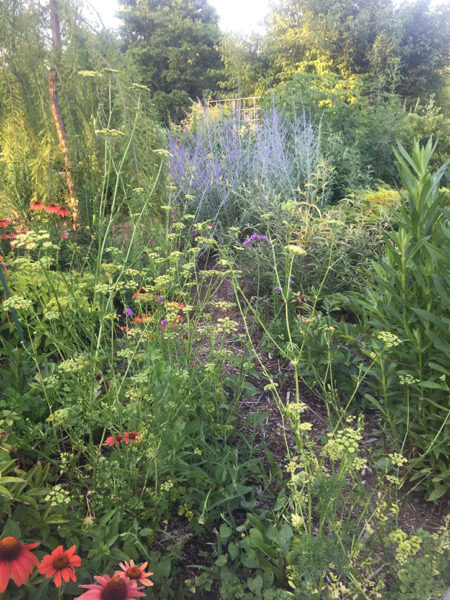Delicious, easy to grow, tangy dill provides both seeds and greens to flavor many foods. This variety blossoms early with large seed umbels and foliage for pickling, and is the most widely grown. Plant some for the butterflies!
‘Fernleaf’ is a cultivar growing only 18″ tall with abundant dark blue-green foliage. Very slow to bolt. 1992 All-America winner. Use dill in soups, salads, breads, pickles, fish, and salt-free herb seasoning blends. Self-seeding annual.
Attract Ichneumon wasp, ladybugs, lacewings, umbel flowers attract lacewings, ladybugs, hoverflies, aphid midges and parasitic mini-wasps to your garden. Also a favorite larval food of the Eastern black swallowtail butterfly. Can be used as a trap crop for aphids.
(self-seeding) The taste of dill leaves resembles that of caraway, while the seeds are pungent and aromatic. Freshly cut, chopped leaves enhance the flavor of dips, herb butter, soups, salads, fish dishes, and salads. The seeds are used in pickling and can also improve the taste of roasts, stews and vegetables. Ground seeds can be used as a salt substitute. Both the flowering heads and seeds are used in flavored vinegars and oils.
Use two teaspoons of mashed seeds per cup of boiling water to brew a stomach-soothing tea. Steep for ten minutes and drink up to three cups a day. To treat colic or gas in children under two, give small amounts of a weak tea. Combining dill and fennel can ease colic in infants.
